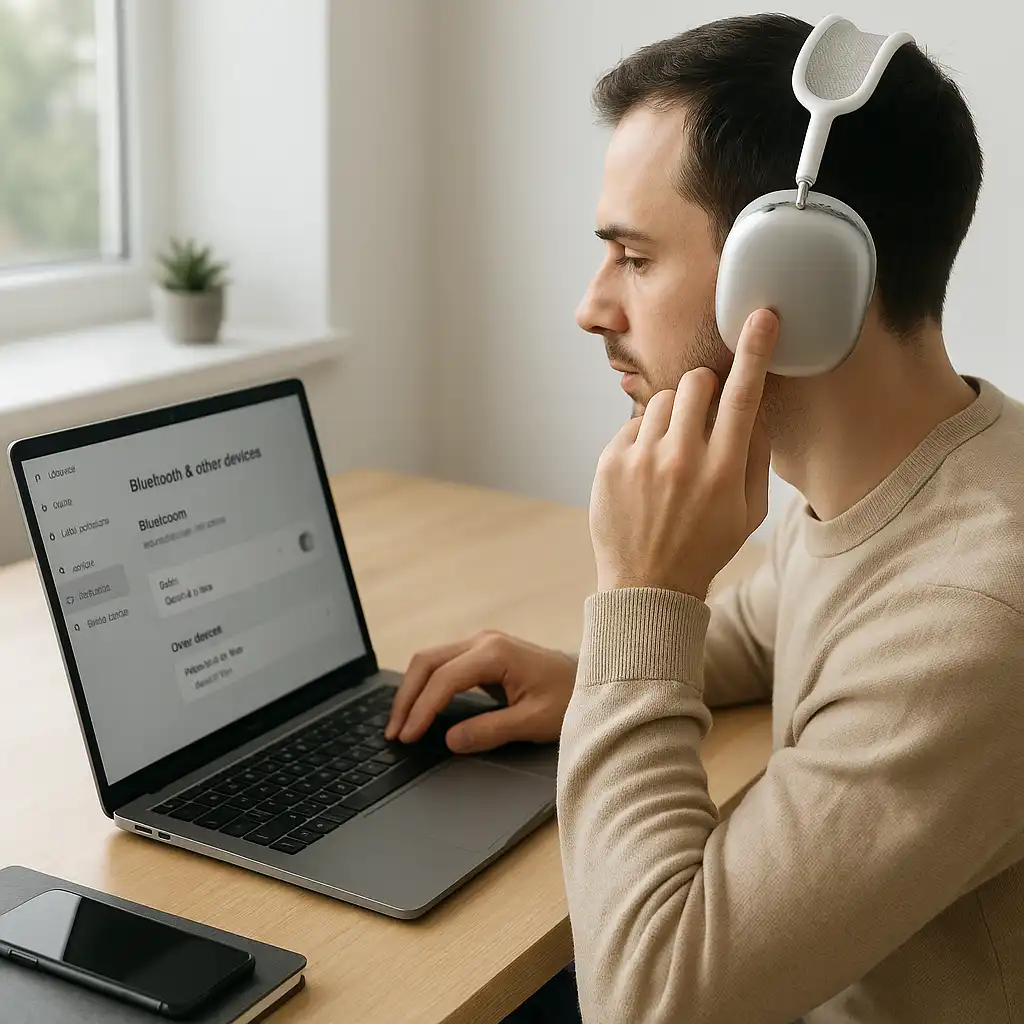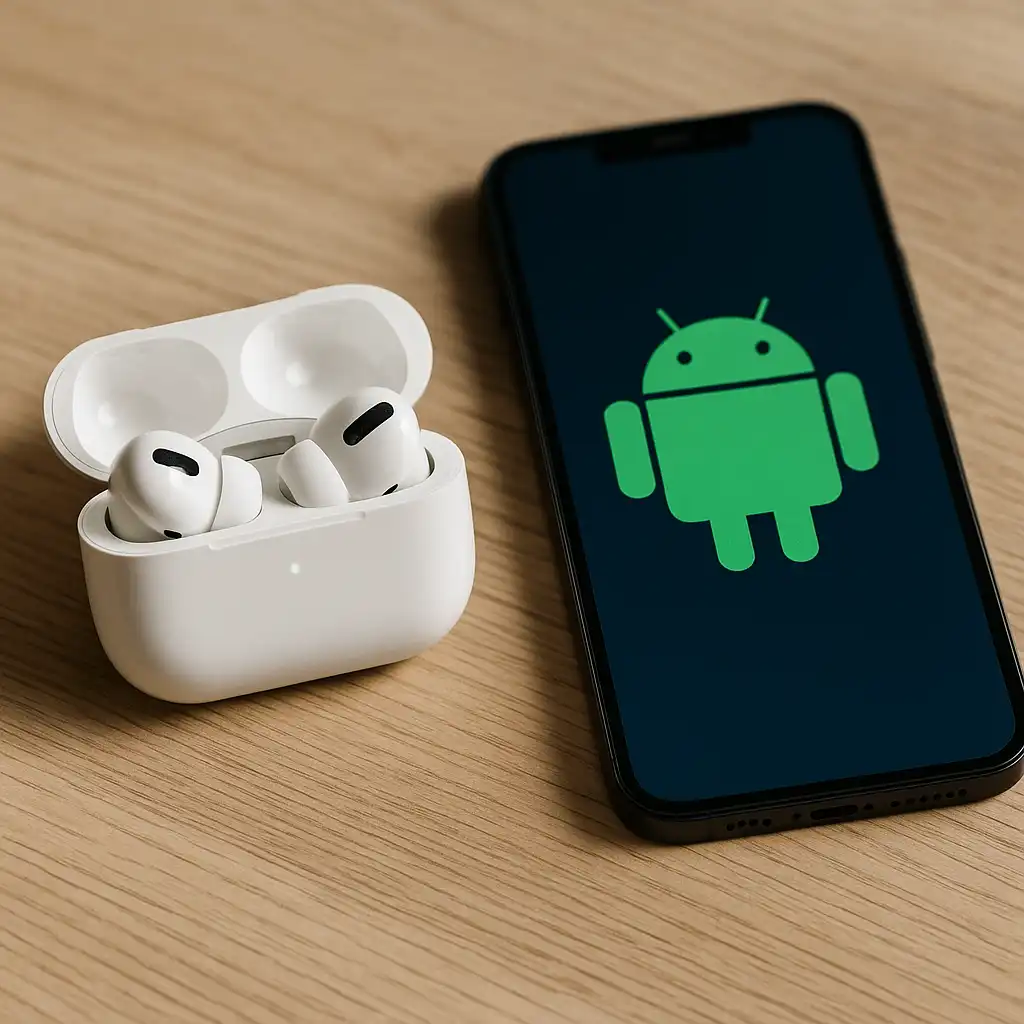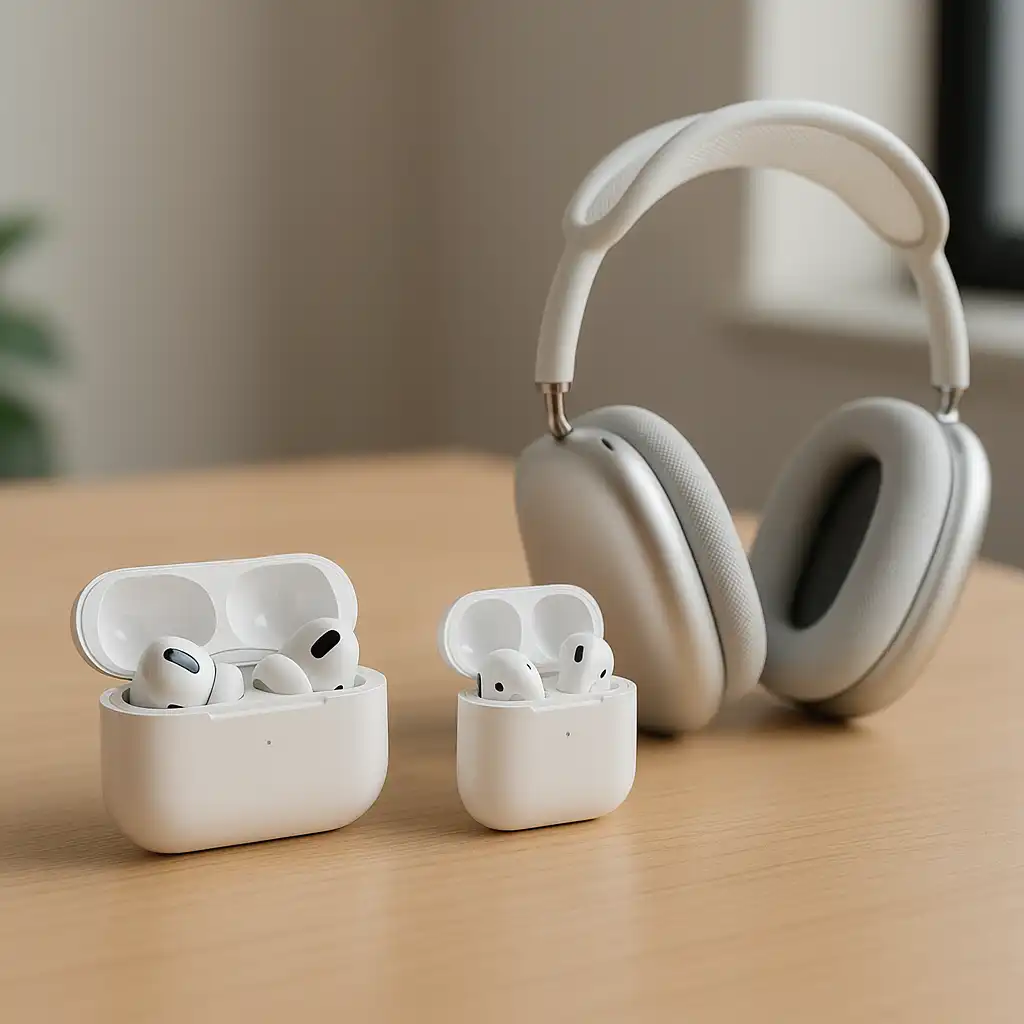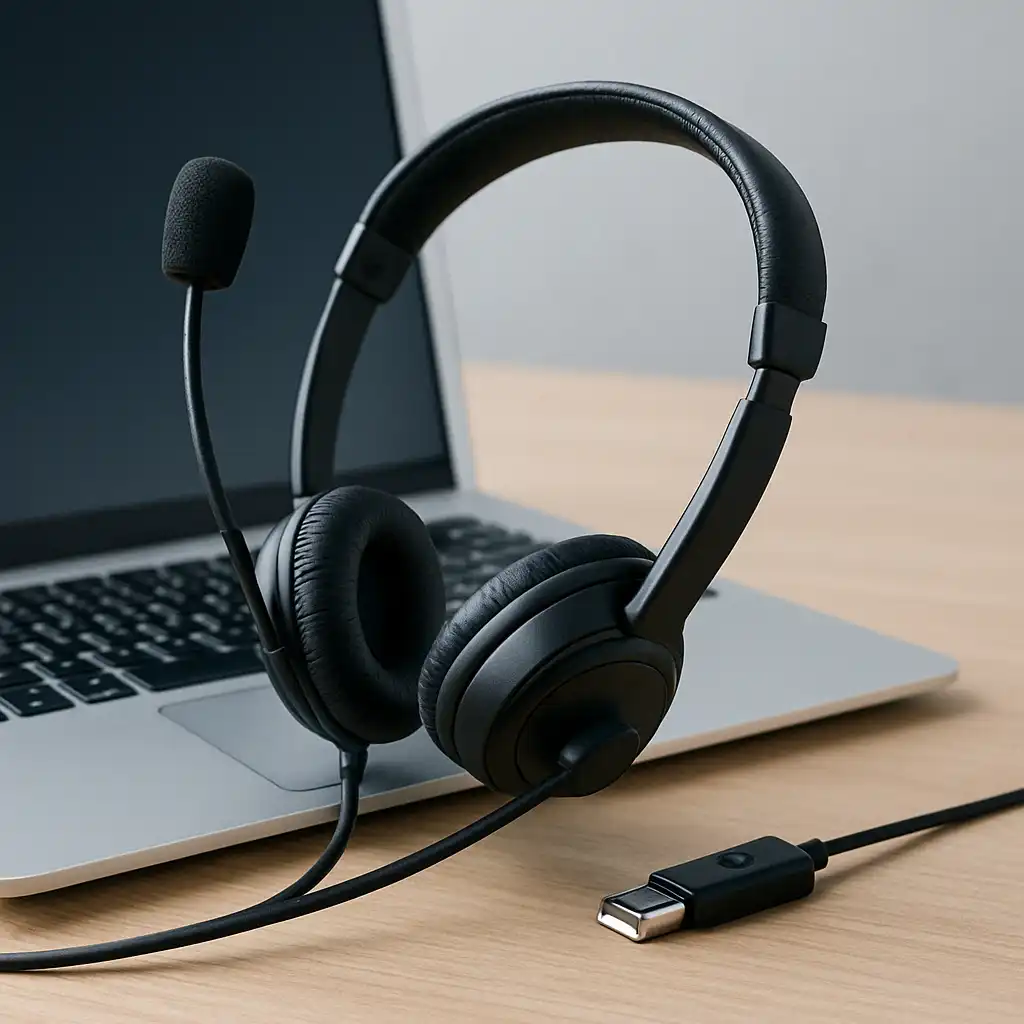How to Connect AirPods Pro Max to Laptop – Easy Bluetooth Setup Guide
Disclosure: This post contains affiliate links. LaptopVoyager.com participates in the Amazon Associates Program and may earn commissions on qualifying purchases, at no extra cost to you.
Last Updated: October 2025
Pairing your AirPods Pro Max with a laptop can seem complicated, especially if you’re switching between Apple and Windows devices. The good news? Once connected, they’ll automatically reconnect next time — giving you rich, wireless sound for calls, classes, or streaming without any hassle.
👉 For more laptop-friendly audio picks, check out our laptop audio gear guide: our laptop audio gear guide.
🔍 Check Laptop Compatibility
Before you start, make sure your laptop’s Bluetooth setup is ready to go:
- Turn on Bluetooth from your system settings.
- Update Windows or macOS to the latest version.
- Keep in mind that MacBooks often pair instantly via iCloud, while Windows laptops need manual setup.
🔍 How to Connect AirPods Pro Max to a Windows Laptop
Here’s the quick way to connect your AirPods Pro Max on Windows:
- Go to Settings > Bluetooth & Devices > Add Device.
- On your AirPods Pro Max, press and hold the noise control button until the white LED starts flashing.
- Select AirPods Pro Max when it appears in the Bluetooth list.
- Wait until it says “Connected,” then play something to test your sound.
🔍 How to Connect AirPods Pro Max to a MacBook
Connecting on a Mac is even easier:
- Open System Settings > Bluetooth.
- Hold the noise control button on your AirPods until the indicator light flashes.
- When “AirPods Pro Max” appears, click Connect.
- Under Sound Settings > Output, select AirPods Pro Max.
If you’re signed in with the same Apple ID on both devices, your AirPods will usually connect automatically next time you use them.
👉 If you’re curious about how Apple’s other earbuds compare, check our guide on whether AirPods Pro 2 are good for running.
🔍 Adjust Sound and Microphone Settings
Once paired, make sure the AirPods handle both sound and mic input:
- Windows: Go to Sound Settings > Output/Input Device, then pick your AirPods.
- Mac: Open System Settings > Sound, and select AirPods for both Output and Input.
- Use Noise Cancellation or Transparency Mode for better focus and comfort during work or study sessions.
📌 Troubleshooting Connection Problems
If your AirPods aren’t connecting or keep disconnecting, try these quick fixes:
- Not showing in Bluetooth list: Reset your AirPods Pro Max and turn Bluetooth off and on again.
- Sound cutting out: Reconnect and check for driver updates.
- Mic not working: Switch your input manually to AirPods.
- Frequent disconnections: Charge your AirPods and remove older paired devices.
🟢 FAQs
Q: Can I connect AirPods Pro Max to any laptop?
Yes — any laptop with Bluetooth 5.0 or newer should work perfectly.
Q: How do I put AirPods Pro Max in pairing mode?
Press and hold the noise control button on the right earcup until the LED flashes white. That means they’re in pairing mode and ready to connect.
Q: Why don’t my AirPods show up in the Bluetooth list?
Make sure they’re close to your laptop and in pairing mode. If that doesn’t help, restart Bluetooth and try again.
Q: Can I use AirPods Pro Max for Zoom or Teams calls?
Absolutely. Just set AirPods as both the input and output device in your laptop’s sound settings.
Q: Do they reconnect automatically?
Yes, they reconnect automatically when Bluetooth is on and your AirPods are nearby.
✅ Conclusion
Knowing how to connect AirPods Pro Max to a laptop makes your workflow smoother — whether you’re on Windows or Mac. Once paired, they deliver seamless, high-quality audio for meetings, music, or movies. Keep them charged, check your sound settings, and you’ll be ready to enjoy that signature Apple sound wherever you work or relax.






